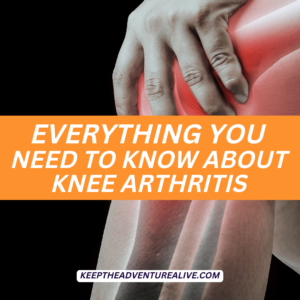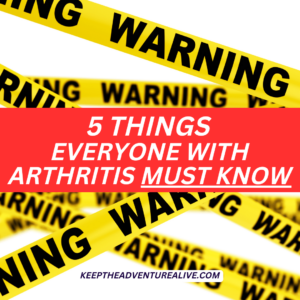When trying to figure out the difference between osteoarthritis vs osteoporosis, they are actually more connected than you think. Osteoarthritis impacts the joints and osteoporosis impacts the bones. One of these conditions can actually contribute and cause the other. The more you know about these conditions, the healthier you can keep both your joints and your bones!
Osteoporosis can be commonly associated with Osteoarthritis. Both conditions can impact your strength, mobility, and confidence in daily life. There are seven things that you should know about these two conditions if you have been diagnosed with one or both. Take a look to see exactly what you should know.
1. What is osteoarthritis? What is osteoporosis?
Osteoarthritis is a condition that involves the joints. It includes joint stiffness, pain, and limited mobility in larger joints such as hips, knees, spine, and shoulder. It can also exist in smaller joints such as hands or feet. Common causes of osteoarthritis include family history, high levels of inflammation, obesity, physical inactivity, and previous history of surgery.
Osteoporosis is a common condition primarily in women that involves the bones. It includes weakening of the bones commonly in the hips, spine, and forearm/wrist. It can be caused by low calcium intake, malnourishment, reduced estrogen, physical inactivity, as well as family history.
2. Why do they exist together?
Osteoporosis and osteoarthritis commonly exist together for a couple of reasons. The primary reason is when you are dealing with joint pain it is common to reduce activity levels. This can lead to muscle weakness and decreased bone strength. Bones like a challenge and one of the best ways to keep up bone strength is to do weight bearing exercise, meaning exercises where you are standing. If you spend a majority of time laying down or sitting, this can actually negatively impact your bones.
Physical inactivity is one of the causes in both of these conditions and can make you more susceptible to both conditions as well.
3. If I have one of these conditions, where do I start?
If you have been diagnosed with osteoarthritis, one of the major priorities is increasing your muscle strength and reducing inflammation. Inflammation can come from many different aspects of life including highly processed diet, inactivity, high stress or anxiety, and weight gain. Building your muscle strength is absolutely crucial to being able to find pain relief. Learn why exercise is helpful for osteoarthritis HERE.
If you have been diagnosed with osteoporosis, one of the major priorities is improving bone strength. This can be through a variety of different outlets, one of the major ones being through higher impact exercise. There are some steroids, hormones and other medications that your doctor may recommend to help build up your bone. Increasing calcium intake with food or supplements may be something that is recommended to you as well.
4. What medical professional should I see?
When looking at osteoarthritis vs osteoporosis, there are different healthcare professionals that can help.
If you have osteoarthritis, the primary people you can see to help are rheumatologists, family physician, orthopedic surgeon, sports medicine physician, and physical therapists. The important thing is to find a healthcare professional that is going to give you options, besides surgery. Surgery is not the only option to treat osteoarthritis. Physical Therapists can help you find an appropriate exercise program to strengthen the muscles around your joints.
If you have osteoporosis, the primary people that can help are usually rheumatologists, endocrinologists, and physical therapists. Rheumatologists and endocrinologists can help to suggest medications and pharmacological treatment options. Physical therapists can help suggest the appropriate exercise program for you to help improve your bone strength.
If you have both of these conditions, it is extremely important to find a physical therapist to help you not only create a strong exercise program for your bones, but you must also make sure it won’t flare up your joint pain too.
5. Osteoarthritis vs osteoporosis, which is worse? Am I doomed if I have both?
When looking at both of these conditions, there isn’t necessarily one that is worse than the other. Both can have varying degrees of severity.
There are people that have osteoarthritis that have a hard time simply walking around their homes and others who don’t even know they have it. Without taking the action needed to help osteoarthritis, it can become severely debilitating. WIth the right action though, people can do amazing things like hike, ski, bike, and even run despite osteoarthritis.
There are people who have a severe degree of osteoporosis that can fracture a vertebrae (bone in your spine) from sneezing or fracture a hip just turning. Then there are some who don’t even know they have it or have a mild case that can be managed simply with lifestyle changes. Without the proper care or action, it can have significant consequences. Osteoporosis doesn’t typically significantly impact mobility unless you are at a significant risk for fractures.
If you have both, you are not doomed! It’s extremely important to take action to strengthen both your bones and muscles so you can keep doing things you love. Without the proper management there are consequences such as pain, weakness, instability, poor balance, and fractures.
6. How do I know if I have either?
Osteoarthritis is typically diagnosed based on your symptoms and an x-ray. Common symptoms include morning joint stiffness, joint pain, and loss of range of motion. There isn’t a particular test that can directly define an arthritis diagnosis though. There is a blood test that can test for levels of CRP (a type of inflammation) that can contribute to the diagnosis if numbers are outside normal ranges. Learn more about the diagnosis process HERE.
Osteoporosis is typically diagnosed with a full body scan called a DXA scan. This test can read your bone density, how strong/thick your bones are. If your bone density falls outside of normal values, you can be diagnosed with osteoporosis. Other test such as hormone levels can be telling as well.
7. How do I prevent either from getting worse?
If you are diagnosed with osteoarthritis it is also important to control for lifestyle factors such as diet and exercise. The more processed foods you eat and the less you exercise, the more inflammation that will be in your body. It is crucial to find ways to decrease inflammation for success with osteoarthritis.
If you are diagnosed with osteoporosis, it is so important to get certain lifestyle factors under control including diet (if calcium deficient) and exercise. Both can dramatically impact the progression of osteoporosis. Building bone strength is one of the most vital treatments and there has been research to show that it can be done with diet and exercise. If medications are prescribed, taking them at recommended dosages will be helpful too.
8. Does exercise help both conditions?
The answer is a resounding yes! Exercise can be very powerful for both conditions. There are a few considerations when it comes to exercise for osteoarthritis vs osteoporosis.
For joints with osteoarthritis, exercise helps to strengthen the remaining cartilage, reduce inflammation that leads to irritation, and strengthen the muscles to support the joint(s). When looking at exercise for osteoarthritis it is important to find exercise that does not flare up your pain. Your joint(s) may be sensitive to certain movements.
Beneficial exercise types include:
- Resistance training
- Cardio movements (as long as they feel good): biking, walking, elliptical
- Aquatic exercise (make sure to mix in land movements too!)
- Higher impact exercise (with adequate strength)
If you have osteoporosis, exercise is extremely important as it will help to build and maintain bone strength.
"It is known that bone responds preferentially to mechanical loads that induce high-magnitude strains at high rates or frequencies and that weight-bearing loading is vital"
Watson et al, 2017
According to the LiftMOR trial, it is recommended that those with osteoporosis explore a high intensity resistance and impact training to help improve bone health and reduce fractures.
In order to get stronger, you have to challenge your bone through weight bearing activities. This can include resistance training and jump training primarily but other weight bearing activities such as walking can be helpful.
Beneficial exercise types include:
- High emphasis on resistance training
- Cardio such as walking and running
- Higher impact exercise/jumping
While aquatic exercise and cycling can be great for endurance and stamina, since they are not weight bearing activities, they may not be as beneficial as some other types of exercise if looking to build bone.
Here is an example workout:
How to strengthen bones and joints
Considering the differences when looking at osteoarthritis vs osteoporosis, the treatments are relatively similar in the fact that exercise can be very powerful.
If you have both conditions, make sure you are finding movements that feel good on the joints and don’t increase your pain. The idea is to work up to higher intensity exercise and resistance training as you build strength to support those activities.
If you have osteoarthritis, it is not recommended that you go right into resistance training and higher intensity exercise. You must work up to it to prevent a flare up.
If you have osteoporosis without osteoarthritis, you still want to make sure your body is ready for higher impact exercise and resistance training to avoid injury and potential for falls.
If you are unsure where to start…
I have a free 4 Day Jumpstart your Arthritis Adventure Challenge that gives you 4 workouts full of ideas on how to take care of your joints and your bones. You’ll get 4 follow along workouts with me showing you how to get started on your strengthening journey. Click below to learn more and sign up! ⬇️
Alyssa Kuhn
Disclaimer: This post is for general informational purposes only. It should not be used to self-diagnose and it is not a substitute for a medical exam, cure, treatment, diagnosis, and prescription or recommendation. It does not create a doctor-patient relationship between Dr. Kuhn and you. You should not make any change in your health regimen or diet before first consulting a physician and obtaining a medical exam, diagnosis, and recommendation. Move Well Age Well, LLC and Dr. Alyssa Kuhn, PT, DPT are not liable or responsible for any advice, course of treatment, diagnosis or any conclusions drawn, services or product you obtain through this post, video or site. Complete all exercises at your own risk.




